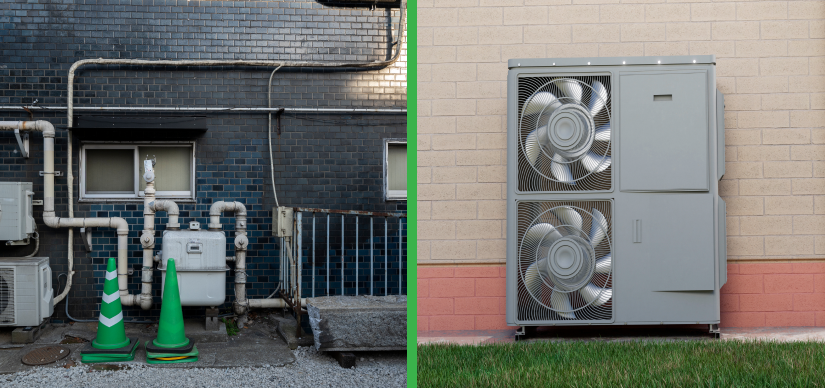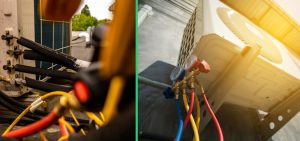Optimizing Comfort: Water Source Heat Pumps for Efficient Cooling and Heating Solutions in San Diego
In modern HVAC technology, heat pumps stand out as innovative solutions for heating and cooling homes efficiently. In San Diego, where climate control is crucial for year-round comfort, understanding the conditions of water source heat pump services becomes essential.
Whether you’re considering installation, repairs, or maintenance, exploring the world of heat pumps can significantly enhance your living experience. This blog can help you understand the geothermal heat pump services while highlighting various types.
Everything about Heat Pump Water Heater Services
Heat pumps are versatile systems that heat and cool your home by transferring heat between indoor and outdoor environments. They operate on the principle of moving heat rather than generating it, making them highly energy-efficient alternatives to traditional heating and cooling systems.
In San Diego’s moderate climate, where winters are mild and summers are warm, heat pumps offer an ideal solution for maintaining comfortable indoor temperatures year-round.
Types of Heat Pumps For Your Understanding
1. Water Source Heat Pumps: A water source heat pump utilizes water as a heat exchange medium. They extract heat from a water source, such as a lake, pond, or well, to provide heating in the winter and can reverse the process to provide cooling in the summer. In San Diego, where access to water sources like the Pacific Ocean or underground aquifers is abundant, water source heat pumps present an efficient and sustainable option for climate control.
2. Geothermal Heat Pumps: A geothermal heat pump harnesses the consistent temperature of the earth’s subsurface to heat and cool homes. By circulating a fluid through underground loops, they extract heat during the winter and release it during the summer. In San Diego, where geothermal energy is readily accessible due to the region’s geological composition, geothermal heat pumps offer homeowners a reliable and eco-friendly heating and cooling solution.
3. Heat Pump Water Heaters: A heat pump water heater uses ambient air to heat water for domestic use. Transferring heat from the surrounding air to the water in the tank consumes significantly less energy than traditional water heaters. In a city like San Diego, where water conservation and energy efficiency are priorities, heat pump water heaters can help households reduce their utility bills while minimizing their environmental impact.
4. Heat Pump Boilers: Heat pump boilers are a variation designed specifically for providing hydronic heating. They operate similarly to other heat pumps but are tailored to work with radiant heating systems, delivering consistent warmth throughout the home. In San Diego, where radiant floor heating is a popular choice for comfort, heat pump boilers offer an efficient and effective heating solution.
5. Water Loop Heat Pumps: A water loop heat pump utilizes a closed-loop piping system to transfer heat between the building and a water source, such as a nearby lake or pond. They provide individualized climate control for different zones within a building while maximizing energy efficiency. In San Diego’s urban environment, water loop heat pumps can be integrated into commercial and residential buildings, offering customizable comfort solutions.
Heat Pump Processes in San Diego along with Tools
1. Installations:
Whether you’re upgrading your existing HVAC system or building a new home, professional installation of a heat pump water heater is crucial for optimal performance and efficiency.
a. Assessment and Planning:
- HVAC technicians begin by assessing the property to determine the best location for the heat pump unit.
- They consider factors such as available space, proximity to electrical connections, and compatibility with existing HVAC systems.
- Planning involves selecting the appropriate type and size of heat pump based on the property’s heating and cooling needs.
b. Preparation:
- Before installation begins, technicians gather the necessary tools and equipment.
- This may include power drills, wrenches, refrigerant gauges, tubing cutters, and electrical testing equipment.
c. Installation:
- Technicians install the indoor and outdoor components of the heat pump system according to manufacturer specifications.
- This involves mounting the outdoor unit on a stable surface, connecting refrigerant lines, and securing electrical connections.
- Indoor components, such as air handlers or ductwork modifications, are installed to distribute conditioned air throughout the property.
d. Testing and Calibration:
- Once the installation is complete, technicians test the system to ensure proper operation.
- They check for refrigerant leaks, verify electrical connections, and calibrate thermostats for accurate temperature control.
- Testing may also involve running the heat pump through heating and cooling cycles to confirm performance.
2. Repairs:
Like any mechanical system, heat pumps may encounter issues over time, such as compressor failures, refrigerant leaks, or electrical malfunctions. Prompt repair services are essential to restore functionality and prevent further damage. In San Diego, HVAC technicians have the expertise and tools to diagnose and repair heat pump problems efficiently, ensuring minimal disruption to your comfort.
a. Diagnosis:
When a heat pump malfunctions, technicians begin by diagnosing the problem.
This may involve conducting visual inspections, performing system tests, and using diagnostic tools to identify the root cause of the issue.
b. Repair or Replacement:
Depending on the nature and severity of the problem, technicians may repair or replace faulty components.
Common repairs include fixing refrigerant leaks, replacing defective compressors or valves, and repairing electrical connections.
c. Testing and Verification:
After completing repairs, technicians test the system to ensure that the issue has been resolved.
They may also conduct additional checks to verify proper system operation and performance.
3. Maintenance:
Regular maintenance is key to prolonging the lifespan of your heat pump water heater and maximizing its efficiency. In San Diego’s climate, where heat pumps often operate year-round, scheduling seasonal maintenance appointments is crucial for keeping your system in top condition. From cleaning coils to checking refrigerant levels, proactive maintenance helps prevent breakdowns and ensures optimal performance when you need it most.
a. Cleaning and Inspection:
Regular maintenance involves cleaning and inspecting various components of the heat pump system.
Technicians clean evaporator and condenser coils, replace air filters, and remove debris from outdoor units to optimize airflow.
b. Refrigerant Check:
Maintenance tasks include checking refrigerant levels and inspecting for any leaks.
Technicians may add refrigerant if levels are low and repair leaks to prevent further loss.
c. Electrical Testing:
Technicians test electrical connections, controls, and safety switches to ensure proper function and safety.
d. System Calibration:
Maintenance includes calibrating thermostats and control settings for optimal performance and energy efficiency.
4 Tools Used:
a. Power Drills and Drivers: Used for mounting components and making holes for piping and wiring.
b. Wrenches and Screwdrivers: Essential for tightening bolts, nuts, and screws during installation and repair.
c. Refrigerant Gauges: Used to measure and monitor refrigerant pressure levels during installation, repair, and maintenance.
d. Tubing Cutters: Used to cut copper tubing to the appropriate lengths for refrigerant lines.
e. Electrical Testing Equipment: Includes multimeters and voltage testers for checking electrical connections and circuits.
f. Vacuum Pump: Used during installation and repair to remove air and moisture from the refrigerant lines.
g. Manifold Gauge Set: Used to measure pressure and temperature of refrigerant in the system.
h. Coil Cleaning Tools: Brushes and fin combs for cleaning the evaporator and condenser coils during maintenance.
In San Diego, where comfort meets sustainability, heat pumps emerge as indispensable HVAC solutions. Whether you’re considering a water source heat pump, geothermal heat pump, heat pump water heater, heat pump boiler, or water loop heat pump, professional services are essential for installation, repairs, and maintenance.
By partnering with knowledgeable HVAC providers, San Diego residents can unlock the full potential of heat pump technology, enjoying efficient climate control tailored to their unique needs and preferences.







